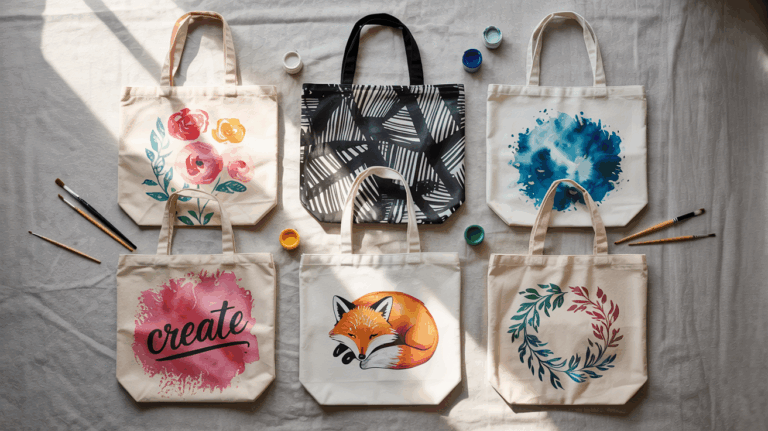The custom t-shirt market is booming, and there’s never been a better time to turn your creative designs into a profitable business. Platforms like Etsy and Instagram provide a seamless way to sell your designs without the need for a physical storefront. Whether you’re an artist, entrepreneur, or just testing the waters, selling custom t-shirts online can be an exciting and lucrative venture.
This guide walks you through the entire process, from setting up your Etsy shop to growing your audience on Instagram and choosing the right printing method.
1. Choosing the Right Business Model

Before selling your first t-shirt, you need to decide how you’ll produce and fulfill orders. The two main approaches are print-on-demand (POD) and bulk printing.
With POD, you don’t need to hold inventory or manage shipping. A third-party service, such as Printful, Printify, or Gelato, prints and ships the shirt directly to your customer. This method keeps startup costs low and is ideal for testing designs without upfront investment. However, profit margins can be lower compared to bulk printing.
On the other hand, bulk printing allows you to order shirts in advance at a lower cost per unit. While this increases potential profit, it requires storage space and a higher initial investment. If you’re confident about selling in larger quantities, this could be a smart choice.
For most beginners, POD is the safest way to start. It allows you to experiment with different designs and only pay for production when a customer places an order.
2. Setting Up Your Etsy T-Shirt Store
Etsy is a fantastic platform for selling t-shirts because customers actively search for unique and custom apparel. To succeed, you need a compelling shop name, engaging product listings, and a strategic pricing plan.
When choosing a shop name, consider something that reflects your brand’s personality. A name that is simple, memorable, and relevant to your niche will help customers remember you.
Your product listings should be optimized for Etsy’s search engine. Use clear, descriptive titles with relevant keywords. For example, instead of “Cool Graphic Tee,” try “Funny Cat Lover T-Shirt – Cute Gift for Pet Owners”. Descriptions should provide essential details like fabric type, fit, and care instructions. Well-lit, high-quality product images are crucial. Consider using lifestyle shots to show your designs being worn in real-world settings.
Pricing should balance profitability and competitiveness. Research similar products on Etsy to determine a fair price, typically between $20 and $35. Keep in mind the costs of production, shipping, and Etsy’s fees when setting your price.
3. Printing Methods: Which One is Best?
The quality of your t-shirts depends largely on the printing method you choose. Here are some of the most common techniques:
Screen Printing is cost-effective for bulk orders and produces long-lasting prints. However, it’s not ideal for small batches or complex designs with multiple colors.
Direct-to-Garment (DTG) Printing is a great choice for print-on-demand businesses. It works like an inkjet printer but for fabric, allowing for detailed, colorful designs without setup fees.
Direct-to-Film (DTF) Printing is a newer method that prints designs onto a special film before transferring them onto fabric. This technique provides vibrant colors, and durability, and works on a wide range of materials, making it an excellent option for many Etsy sellers.
Heat Transfer Vinyl (HTV) and Sublimation Printing are also used in custom t-shirt production. HTV is great for small-scale projects, while sublimation printing is best suited for polyester fabrics and all-over prints.
If you’re using a POD service, they will typically use DTG or DTF printing, which offers excellent quality with no upfront costs.
4. Growing Your Sales with Instagram Marketing
Instagram is a powerful platform for building a brand and attracting customers. A well-optimized Instagram business profile sets the foundation for success. Use a clear profile picture, a bio that explains your brand, and a link to your Etsy shop or website.
Content is king on Instagram. High-quality product photos should showcase your designs in a visually appealing way. Try mixing up lifestyle shots, behind-the-scenes content, and short videos (Reels) to engage your audience. Customers love seeing the process behind a brand, so sharing your design sketches, packaging process, or even customer reviews can add authenticity.
Hashtags play a key role in discoverability. Use a mix of popular and niche hashtags to reach a wider audience. For example, if you sell nature-inspired t-shirts, you might use #GraphicTees, #OutdoorWear, and #EcoFriendlyFashion.
Engagement is just as important as posting. Respond to comments, interact with followers, and collaborate with micro-influencers who align with your brand. Running occasional giveaways can also help grow your audience and boost sales.
5. Expanding Beyond Etsy & Instagram

Once your t-shirt business gains traction, consider expanding beyond Etsy and Instagram. Many sellers launch their own Shopify stores to have more control over branding and pricing. Shopify allows for more flexibility, including integration with POD providers and marketing tools.
Selling on other marketplaces like Amazon Merch, Redbubble, and Teespring can also increase visibility and revenue. Each platform has its own audience, so expanding strategically can help you scale.
Email marketing is another effective way to retain customers and drive repeat sales. Collect emails from Etsy and Instagram buyers, and send out newsletters with new designs, exclusive discounts, or limited-edition drops.
Investing in Facebook and Instagram ads can accelerate your business growth. Start with a small daily budget ($5-$10) to test different ad creatives before scaling up.
6. Common Mistakes to Avoid
Many new t-shirt sellers struggle due to common pitfalls. One of the biggest mistakes is underpricing products. While you want to stay competitive, pricing too low can eat into profits and devalue your brand.
Another mistake is ignoring Etsy SEO. If your product titles and descriptions don’t contain relevant keywords, potential customers won’t find your shirts. Research top-performing listings to understand what keywords they use.
Quality control is crucial. If customers receive low-quality prints or poorly made shirts, they’re unlikely to buy again. Choosing a reliable POD provider ensures consistency and positive reviews.
Neglecting Instagram engagement is another common misstep. Simply posting images without interacting with followers can make your account feel impersonal. Building a genuine community around your brand is key to long-term success.
7. Conclusion: Start Selling Today!
Selling custom t-shirts online is an exciting way to turn creativity into a business. By starting on Etsy, leveraging Instagram marketing, and choosing the right printing method, you can build a profitable and sustainable brand.
Success doesn’t happen overnight, but consistent effort, creativity, and smart marketing can make all the difference. If you’re ready to start, create your first design today and take the first step toward your own t-shirt business!
















